Geek out! Besides the Harp Guitar Gathering, one of the best weeks of the year for an instrument nerd like myself is the annual AMIS meeting. Finding myself inexplicably on the membership committee this year, I may as well tell you that if I don’t get some of you to join the American Musical Instrument Society, they’re gonna revoke all my privileges. I did coerce Graham MacDonald (author of The Mandolin) into joining – and he came to last week’s convention all the way from Australia, so not much excuse for the rest of you! We’ll see more of the gang and activities next issue – right now it’s time to show you just a few of the amazing instruments I saw in Vermilion, South Dakota…
What in the world were we doing in the Vermilion (state motto: “Yes, we’re in the middle of nowhere!”), you ask?
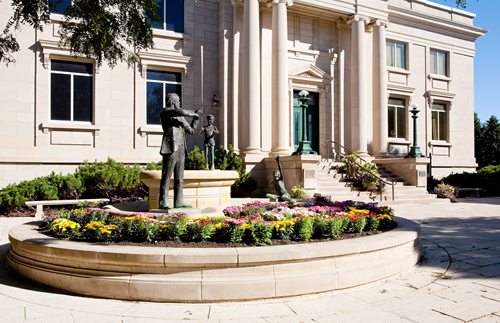 Because some time ago the University of South Dakota became home (long story) to one of the largest and most important musical instrument collections in the world. In other words, a destination place that’s been on my bucket list for years. One cool thing about AMIS is that eventually they’ll give you the excuse and means to visit these out-of-way places (next year Edinburgh!).
Because some time ago the University of South Dakota became home (long story) to one of the largest and most important musical instrument collections in the world. In other words, a destination place that’s been on my bucket list for years. One cool thing about AMIS is that eventually they’ll give you the excuse and means to visit these out-of-way places (next year Edinburgh!).
Housed in a giant three-story one-time library on the campus, the National Music Museum (once called the Shrine to Music Museum) continues to grow and improve. Besides all the wonderful stuff on display, there are treasures (500+ zithers, anyone?!) behind the scenes just waiting to be investigated.
My introduction to the collection was during the opening night wine and hors d’oeuvres get-together. I didn’t get much time that evening, but was able to go back multiple times over the next three days. These photos show a few favorites (as always, mostly within my plucked strings area of interest). Click for larger views (and click your mouse again for max size) of your own favorites!
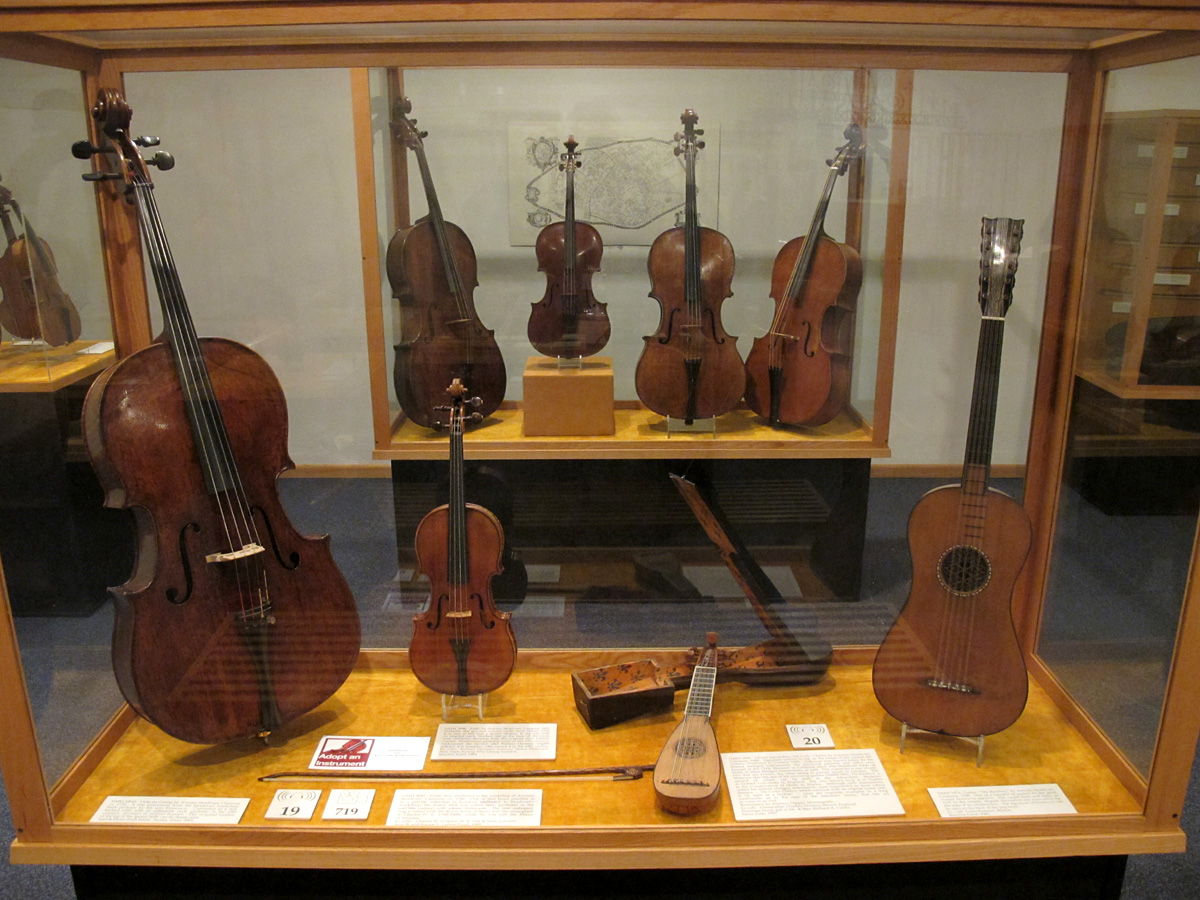
On the ground floor, the Rawlins Gallery displayed “The Genius of North Italian Stringed Instrument Making 1540-1793.” For example, a Stradivarius case – gamba/cello, violin, mandolino and guitar, all of which are, need I say…rare?!
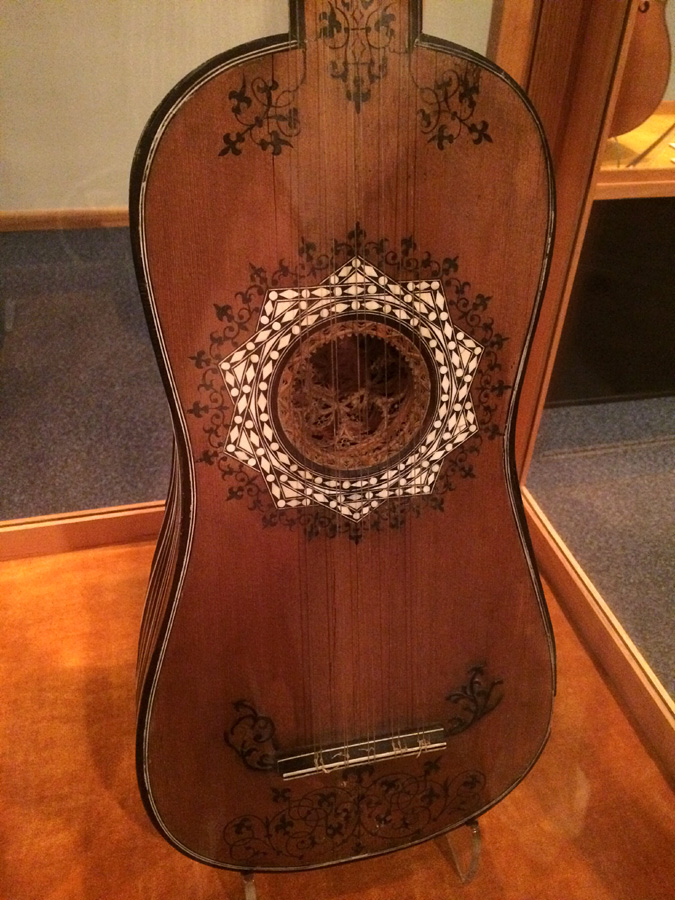 Attributed to Sellas
Attributed to Sellas
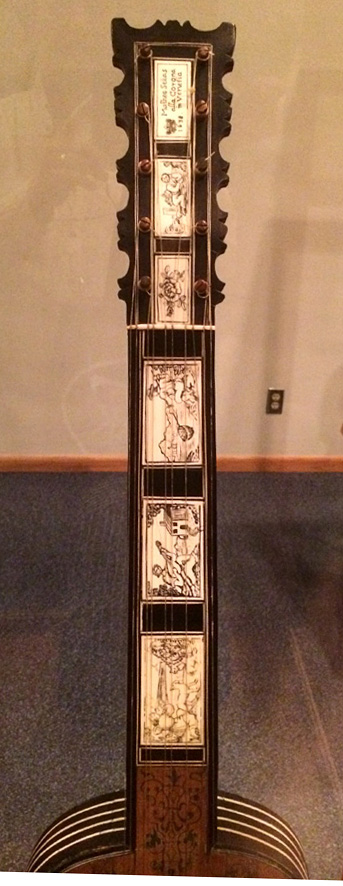 These incredible Baroque guitars always give me goose bumps…
These incredible Baroque guitars always give me goose bumps…
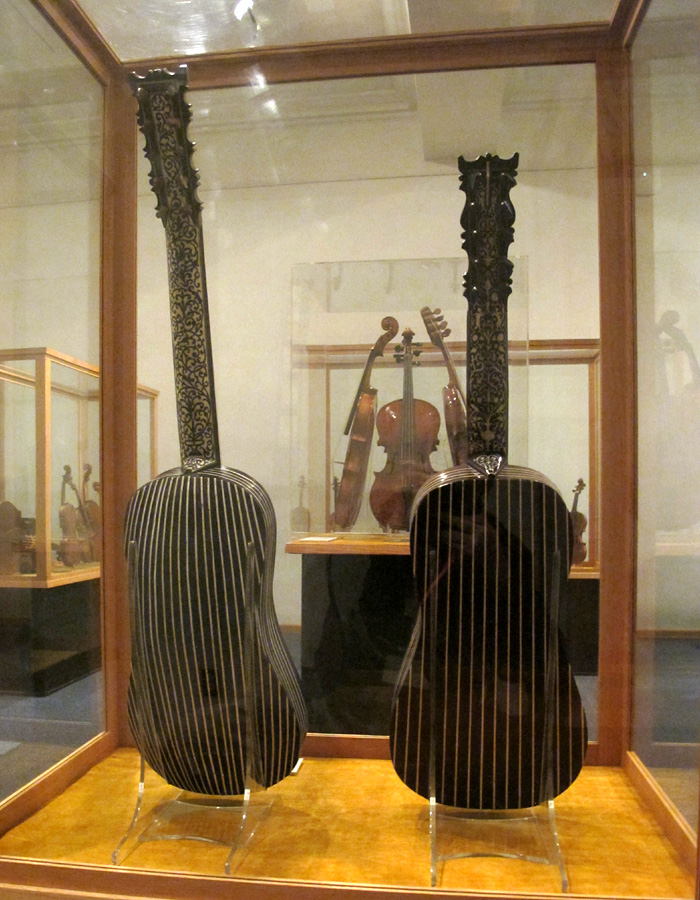 Walk-around cases are always a must, as the backs are often more elaborate than the fronts!
Walk-around cases are always a must, as the backs are often more elaborate than the fronts!
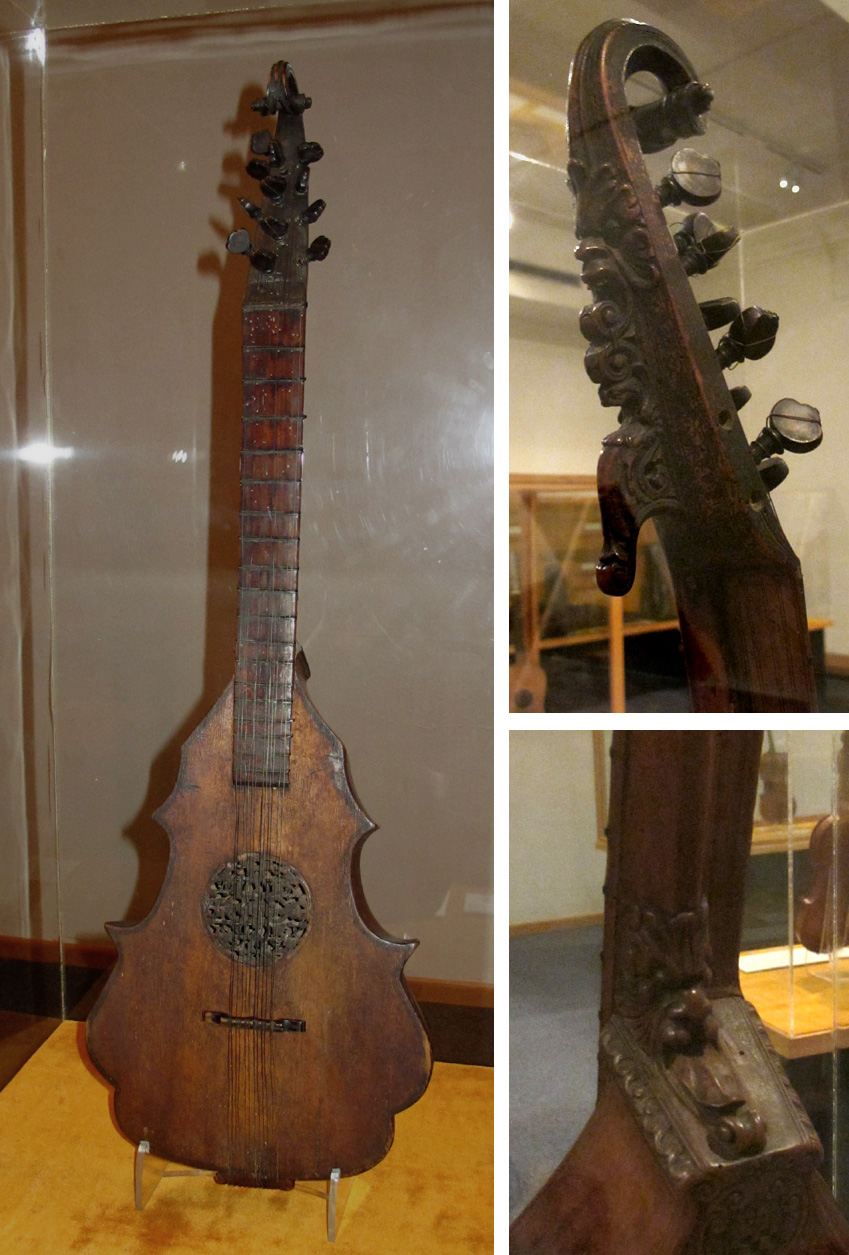 For some reason I was inordinately drawn to this ancient Italian cittern (c.1550!). I love the complex shape, and I’m a sucker for carved faces and creatures. The “green man” designs and execution are exquisite.
For some reason I was inordinately drawn to this ancient Italian cittern (c.1550!). I love the complex shape, and I’m a sucker for carved faces and creatures. The “green man” designs and execution are exquisite.
 The next hall over (central main floor) holds some of the fancier early keyboards.
The next hall over (central main floor) holds some of the fancier early keyboards.
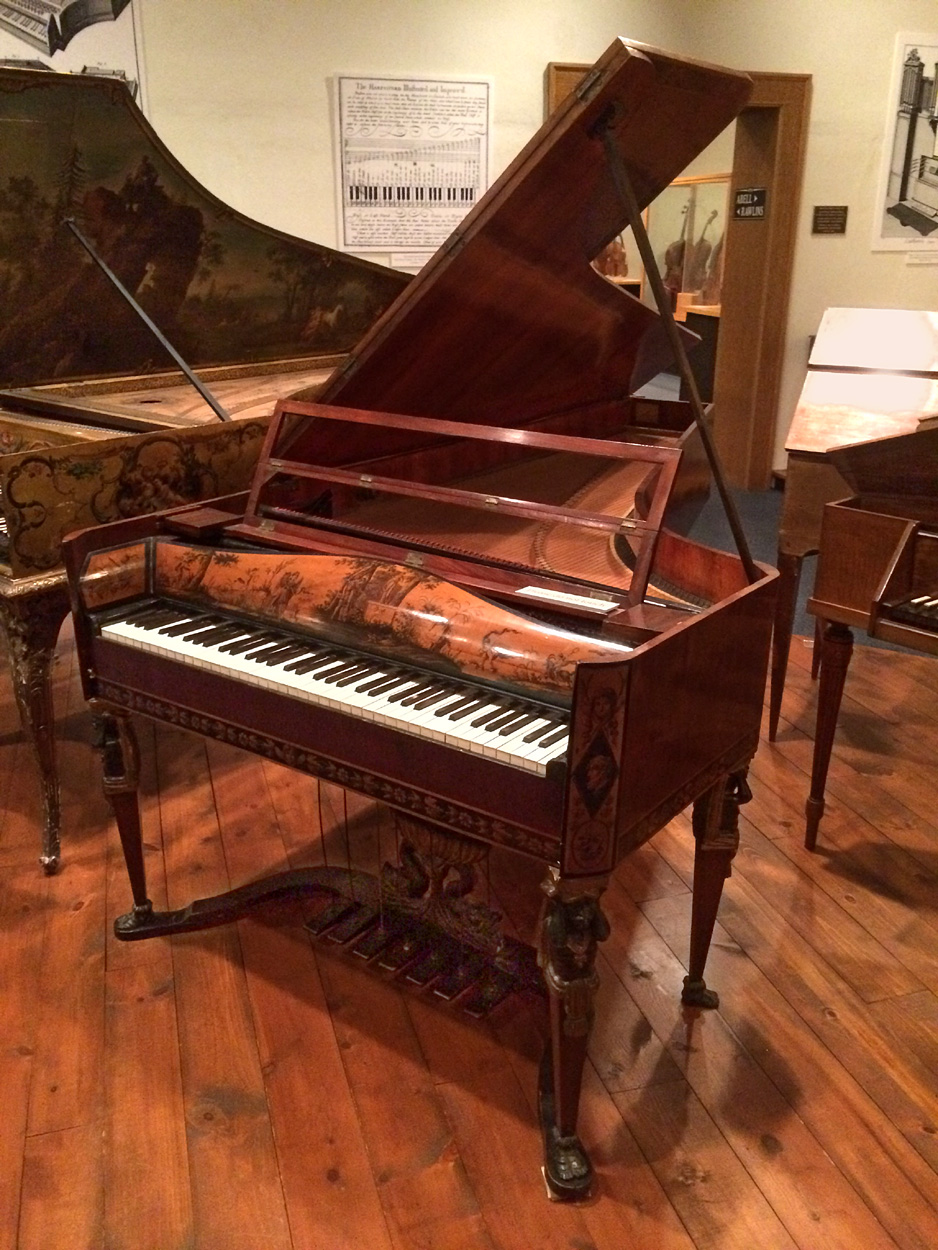 I love the decorated curved nameboard on this gorgeous 1815 Thym grand piano – I hadn’t seen anything quite like it. But the real draw are the seven pedals – as complex as it gets – creating a host of sounds and “special effects.” I missed the demo by Susanne Skyrm, but bought the CD (of her on this very instrument) just released by the museum.
I love the decorated curved nameboard on this gorgeous 1815 Thym grand piano – I hadn’t seen anything quite like it. But the real draw are the seven pedals – as complex as it gets – creating a host of sounds and “special effects.” I missed the demo by Susanne Skyrm, but bought the CD (of her on this very instrument) just released by the museum.
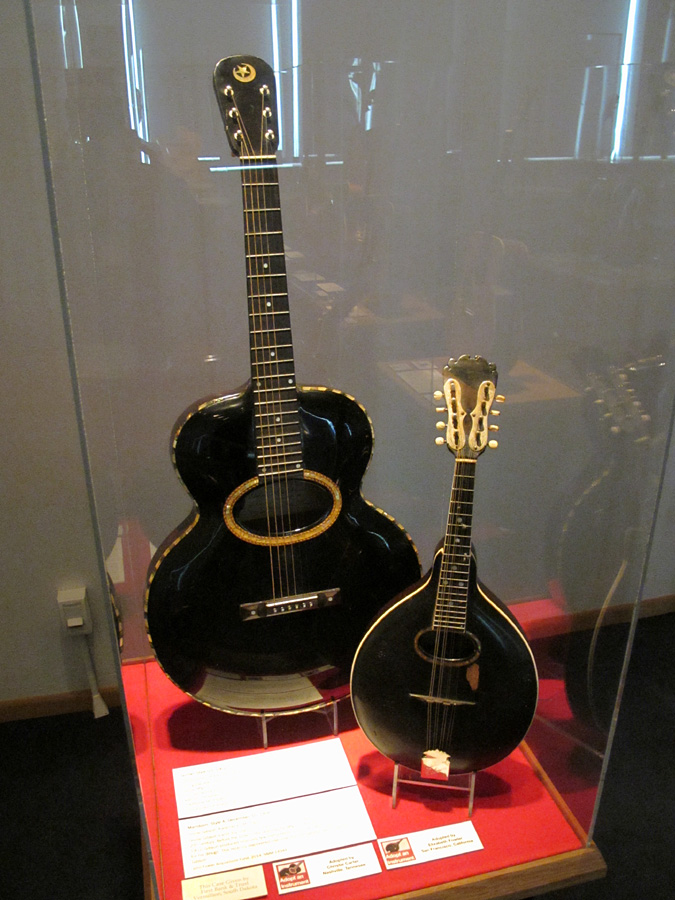
The last room on the ground floor is the more recent guitar hall, where the first treasure I spotted was a recent acquisition: the earliest dated Orville Gibson mandolin (December 10th, 1896) in original condition.
The Orville guitar is fantastic also. While it has a later factory refin, it does give you an idea of what these gorgeous and unusual instruments must have looked like when brand new over a hundred years ago.
AMIS member and guitarist Matthew Hill had done several audio/video demos for the museum just before we all arrived, including one on this Orville guitar. Both he and curator Arian sheets mentioned that while the mandolin sounded pretty lousy, the guitar sounds inexplicably fantastic.
Wish I could’ve heard it!
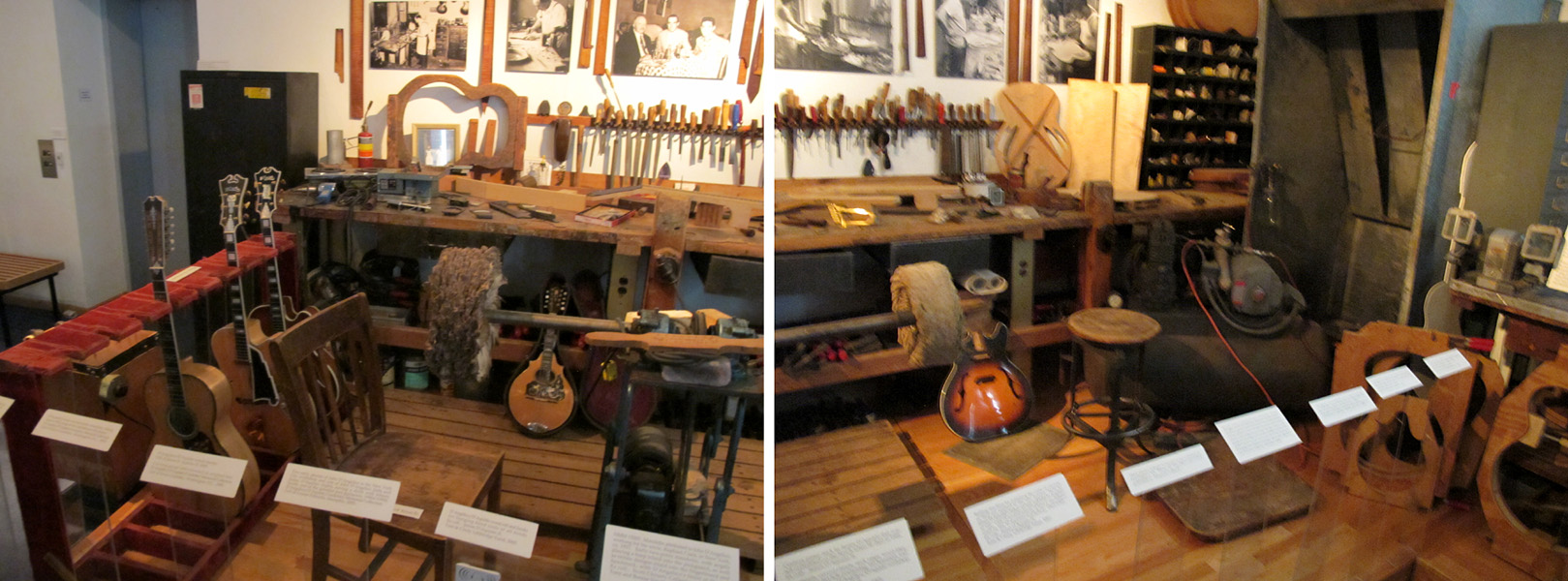
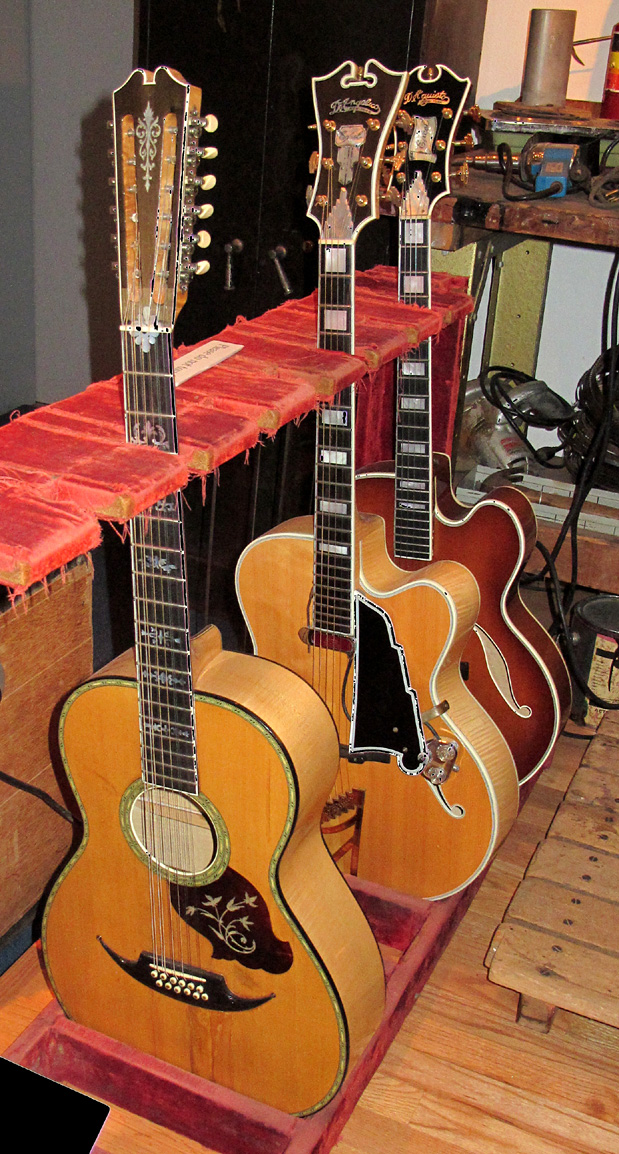
You may have heard that the museum obtained the actual surviving workshop components of D’Angelico / D’Aquisto. They’ve done a wonderful job of recreating the environment of these masters.
Displayed in the rack are an archtop from each and a beautiful Italian-looking 12-string flattop guitar by D’Angelico.
That’s his archtop mandolin sitting on the floor in the above photo as well.
There were numerous other beauties in the guitar room, from antique to vintage to modern.
Lights are kept very dim to mitigate degradation of all the celluloid pickguards and binding.

The second floor has about twice the space as the ground floor. With stairs winding up and down on both sides of the building, I chose one at random and stumbled into their Non-Western Instruments gallery. Here everything was out in the open, so I had to resist the urge to vault the short railings to handle every object like I would in my own collection! Here are some quick iPhone pan shots of the perimeter walls.

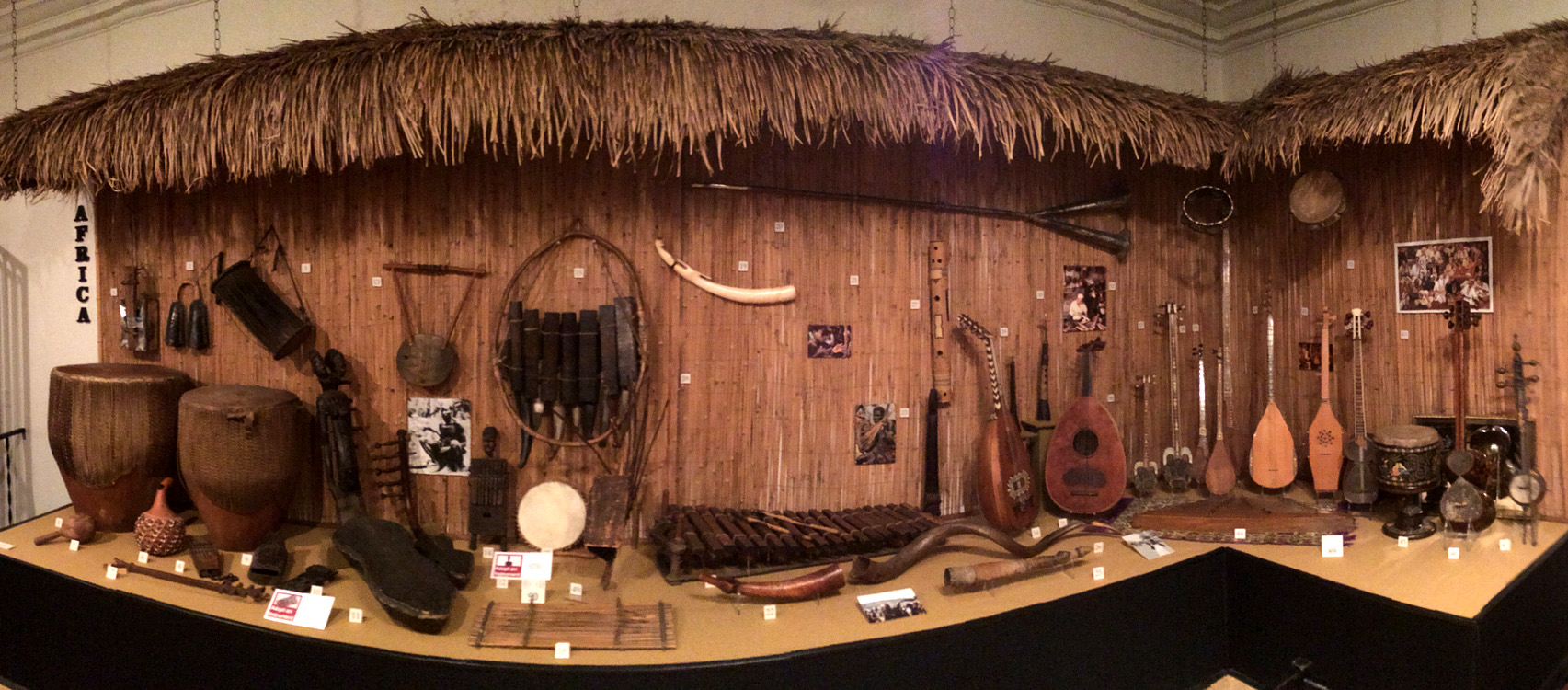
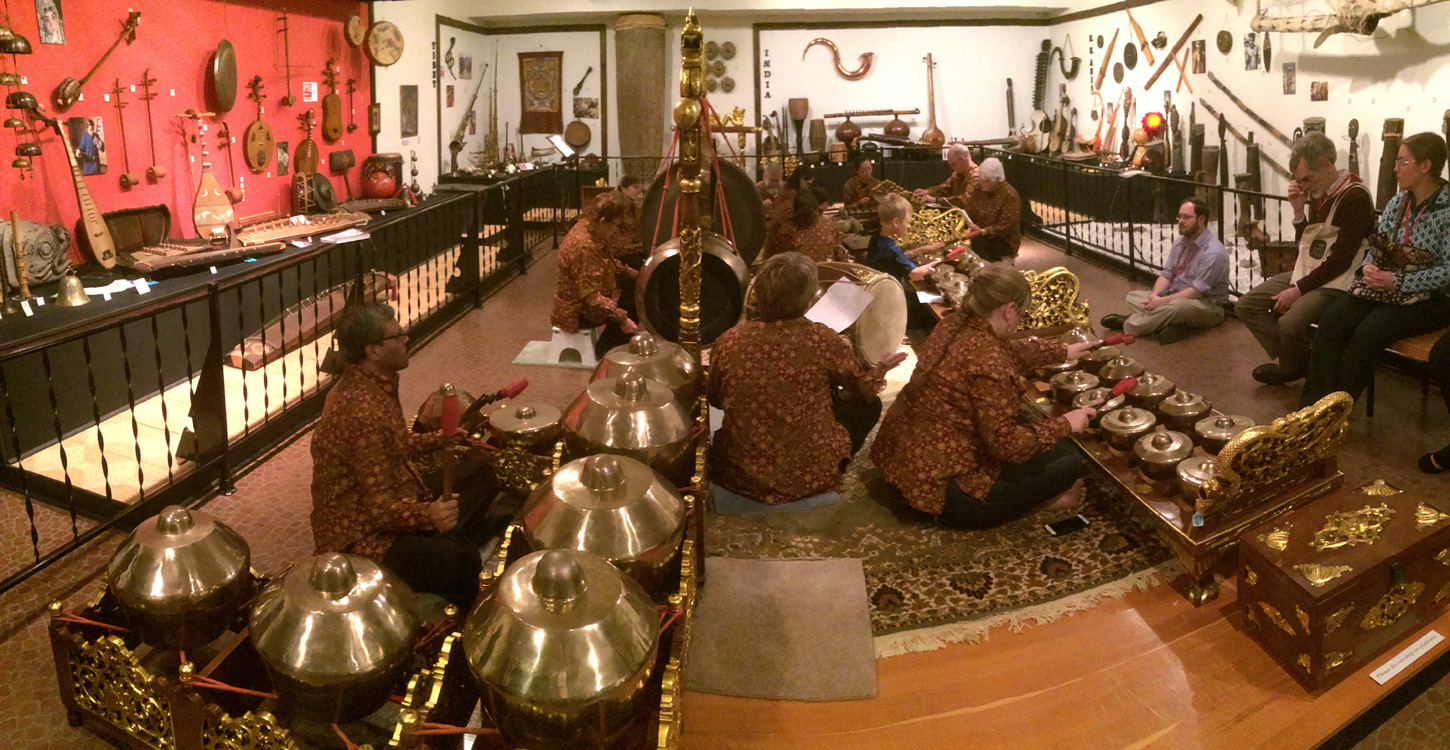 In the center of all this fun is their 83-piece Gamelan Orchestra, commissioned in the late 1990s, and played regularly. You’ll hear it in the next chapter!
In the center of all this fun is their 83-piece Gamelan Orchestra, commissioned in the late 1990s, and played regularly. You’ll hear it in the next chapter!
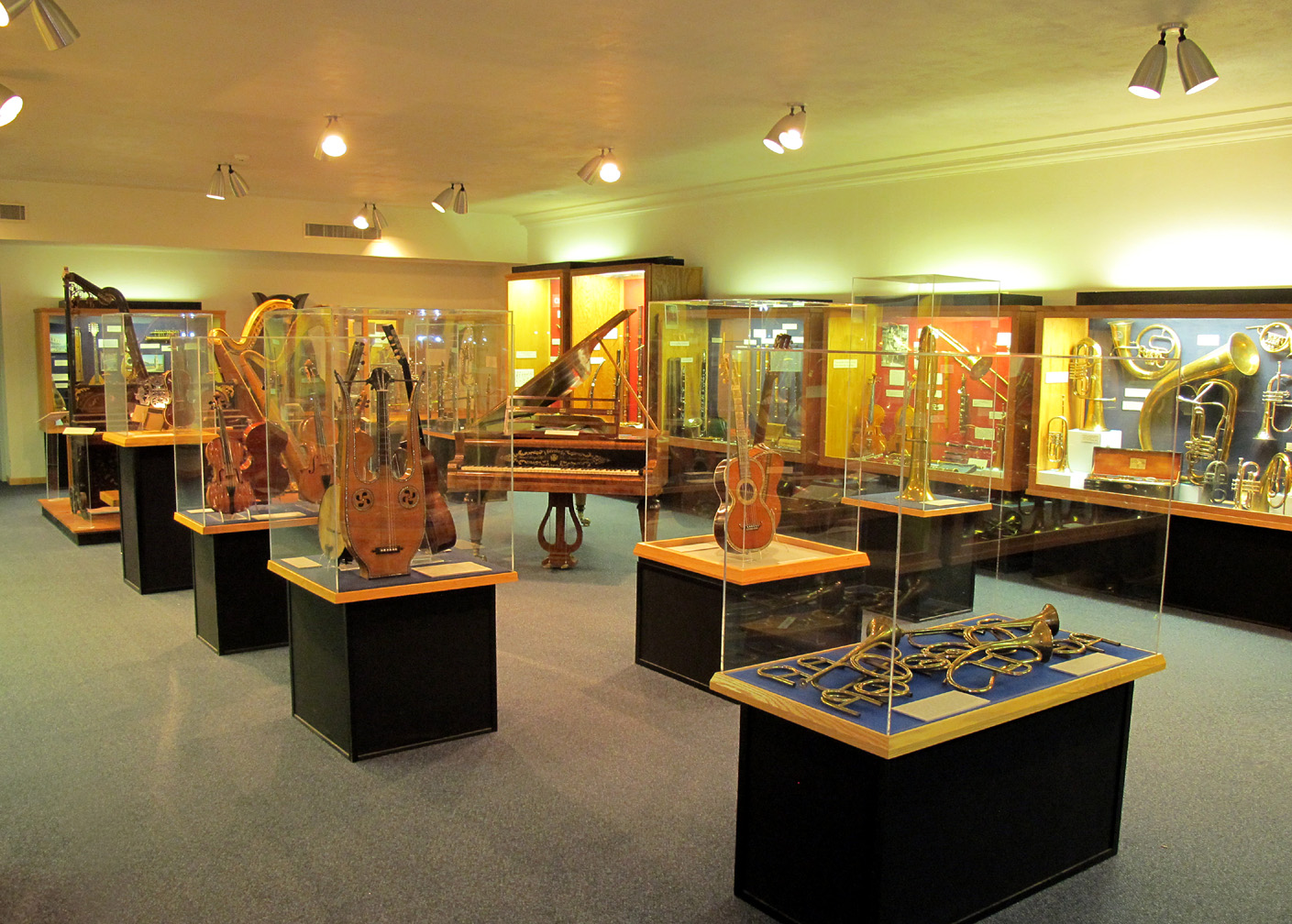 At the opposite end upstairs (I think – it’s surprisingly easy to get lost!), the Cutler Gallery showcases “Musical Innovations of the Industrial Revolution.“
At the opposite end upstairs (I think – it’s surprisingly easy to get lost!), the Cutler Gallery showcases “Musical Innovations of the Industrial Revolution.“
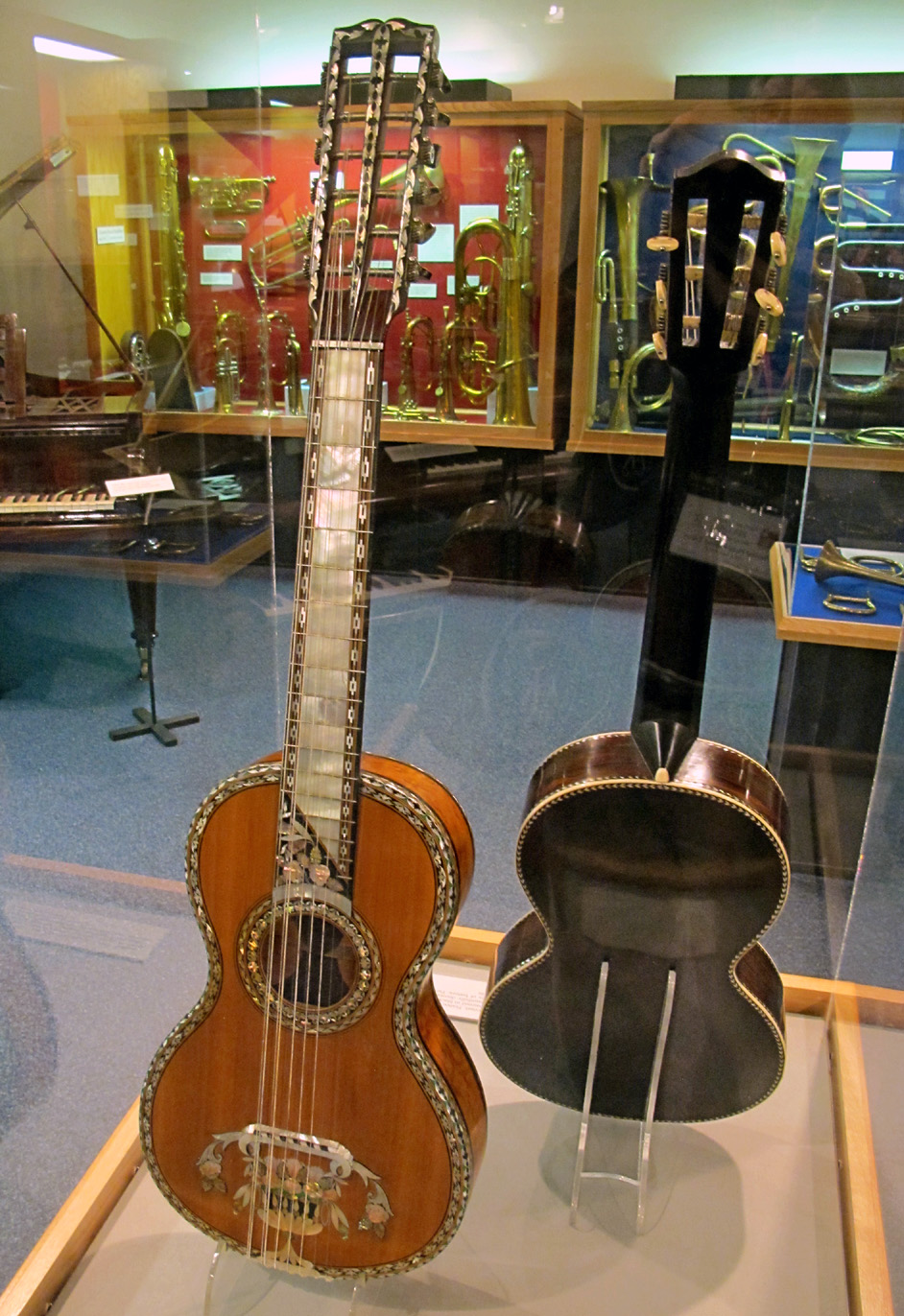
I knew about this gorgeous c.1880 guitarra septima from Mexico City (I allude to it in my “Birth of the American 12-string Guitar” article), and was thrilled to see it on display.
What I didn’t know was that my friend with the romantically-over-the-top-name of Jonathan Santa Maria Bouquet was the one who had painstakingly restored this masterpiece into, well, another masterpiece.
Here’s the backside.
He’s now at the Edinburgh museum; I’m trying to convince him to do a stint at the Miner Museum…
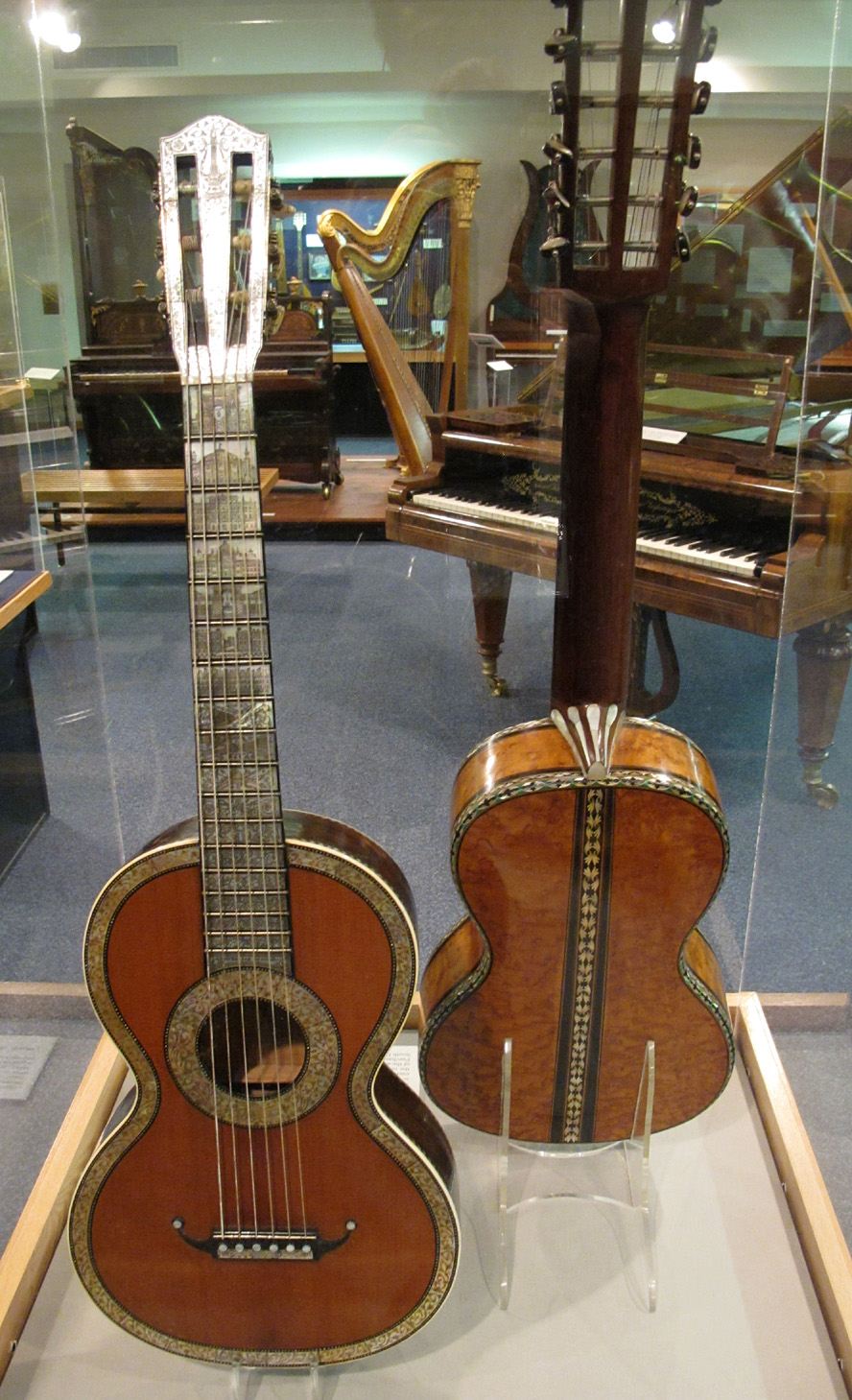
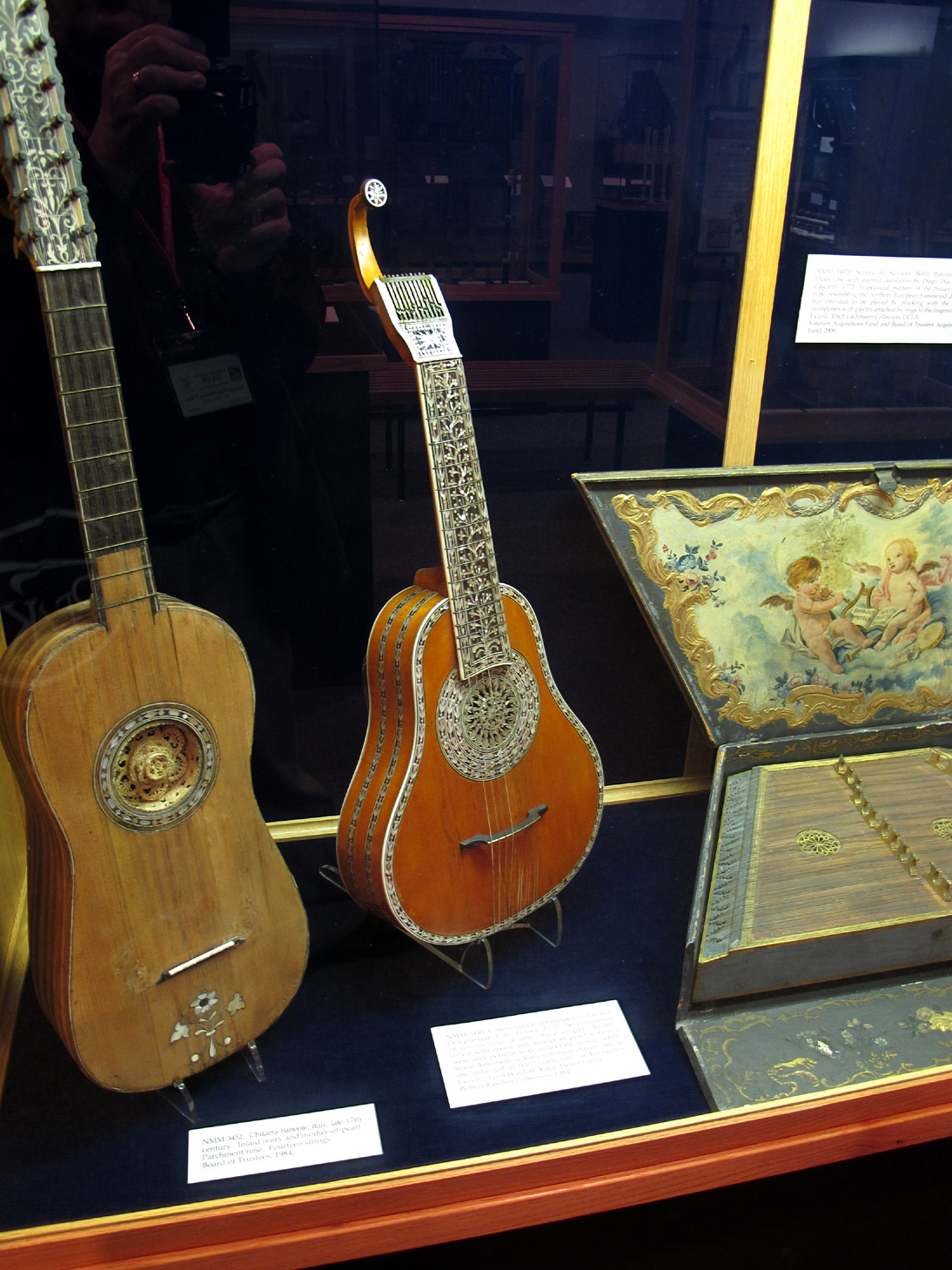 There was a whole bunch of nice stuff in the middle gallery, titled “Musical Treasures from the Age of Louis XIV.” For some reason, I only have good photos of this insane 1777 cistre (or “guittare allemande” – the French version of the English guittar) by Deleplanque…well, can you blame me?!
There was a whole bunch of nice stuff in the middle gallery, titled “Musical Treasures from the Age of Louis XIV.” For some reason, I only have good photos of this insane 1777 cistre (or “guittare allemande” – the French version of the English guittar) by Deleplanque…well, can you blame me?!
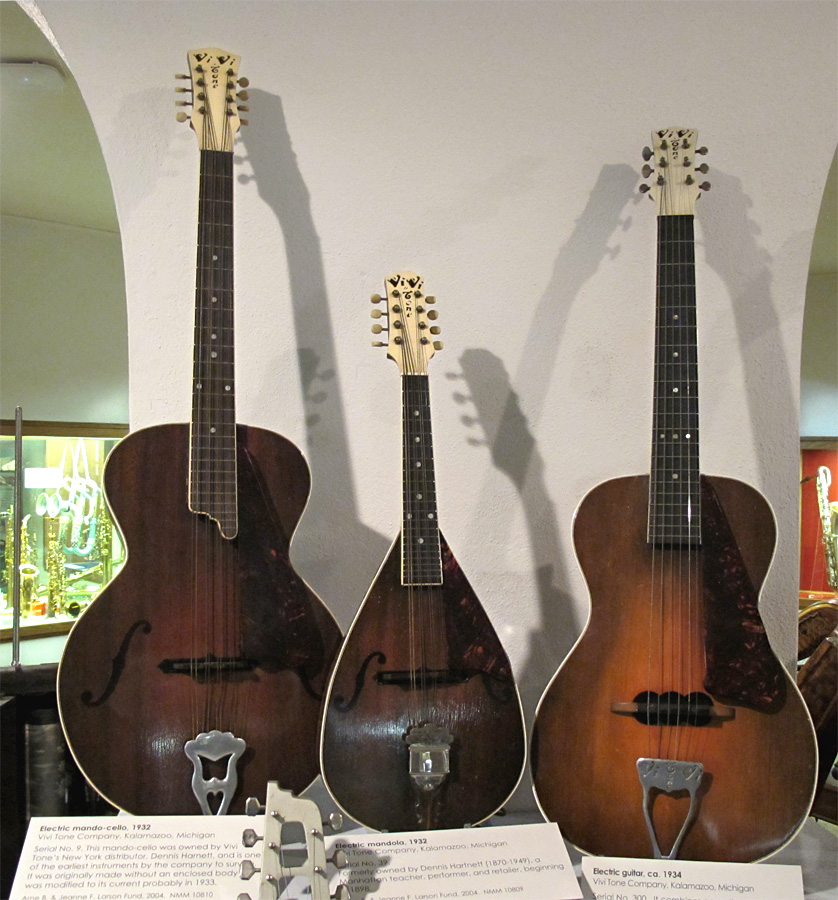
(Above) Everyone knows about the strange ViviTone instruments of Gibson legend Lloyd Loar – but how many have you seen? Me, maybe one before last week. Here are his electric mandocello, mandolin and guitar. Cool!
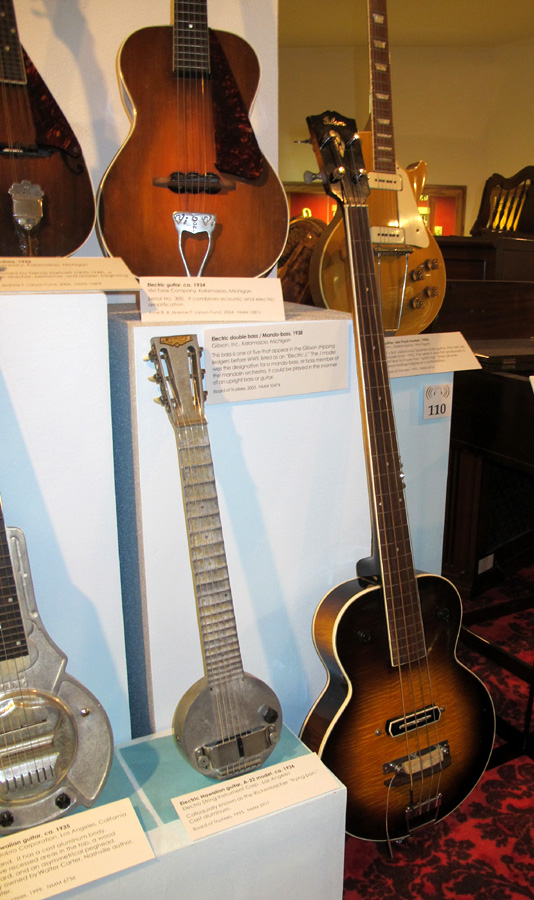
And how did I not know about Gibson’s “electric mando-bass”?! At least that’s what I call it – as it uses a mandobass neck on this wonderful sunburst electric hollow body. Crazy!
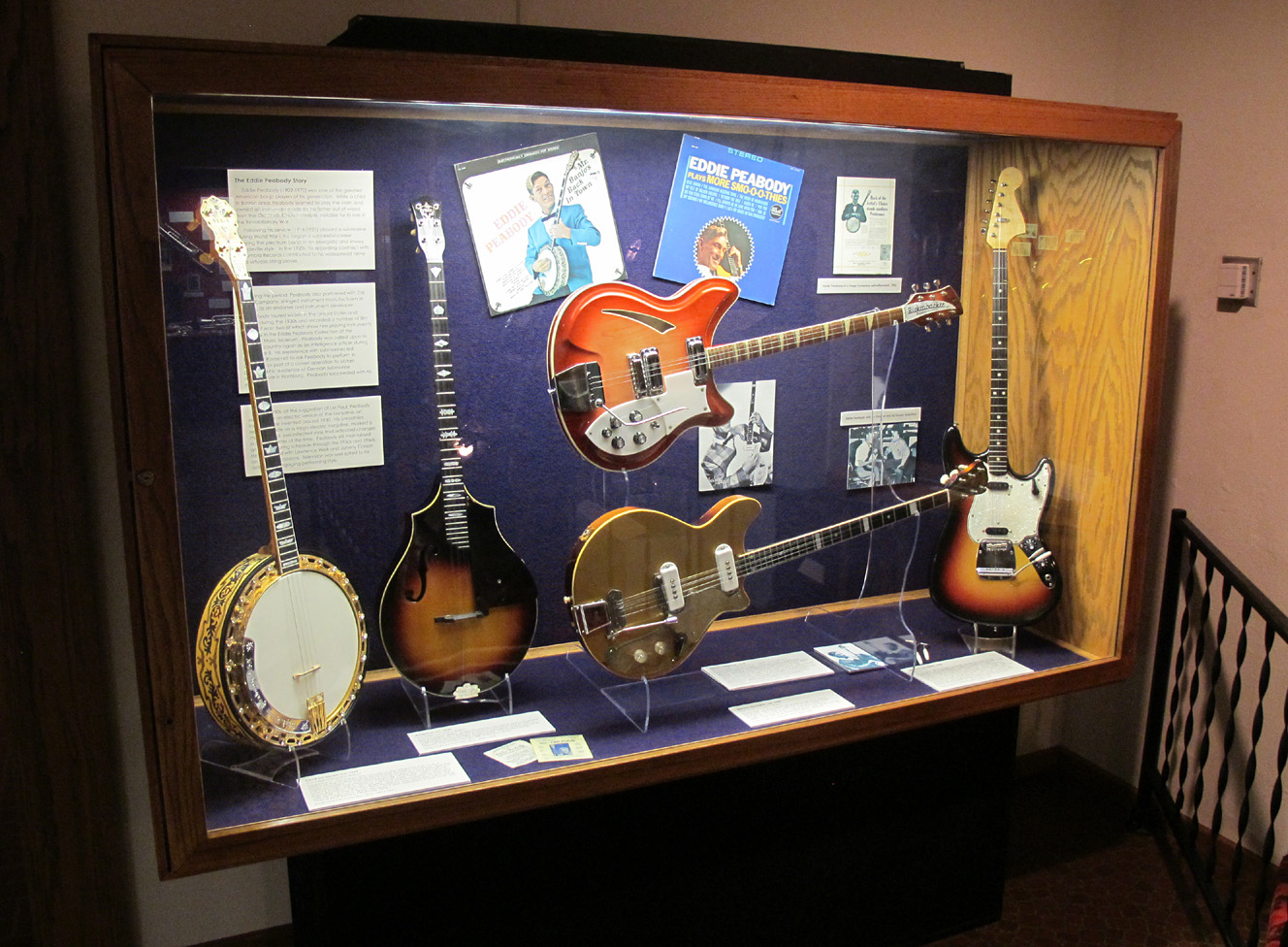
Harpguitars.net readers know that one of the few (and important) historical films we have of players in action is Eddie Peabody playing his Gibson Style U plectrum style in “Strum Fun.”
I didn’t know his collection of instruments and ephemera had been donated to the NMM!
Here’s a bunch, including his invention, the Banjoline (modeled on Vega’s plectrum lute). Strangely, his has the two lower courses doubled but the top two single.

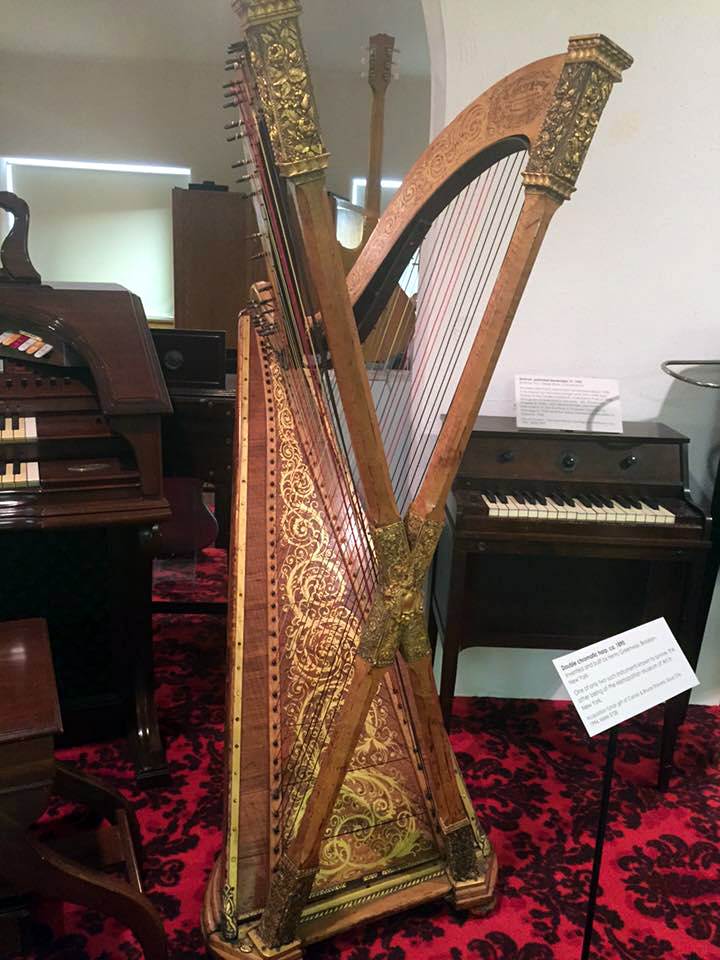 Another incredible surprise. The Met in New York has one of these – the incredible Greenway cross-strung chromatic harp (well…it’s one way to do it…) – I’ve been lucky enough to see that twice now in their storage room. I didn’t know there was a second one!
Another incredible surprise. The Met in New York has one of these – the incredible Greenway cross-strung chromatic harp (well…it’s one way to do it…) – I’ve been lucky enough to see that twice now in their storage room. I didn’t know there was a second one!
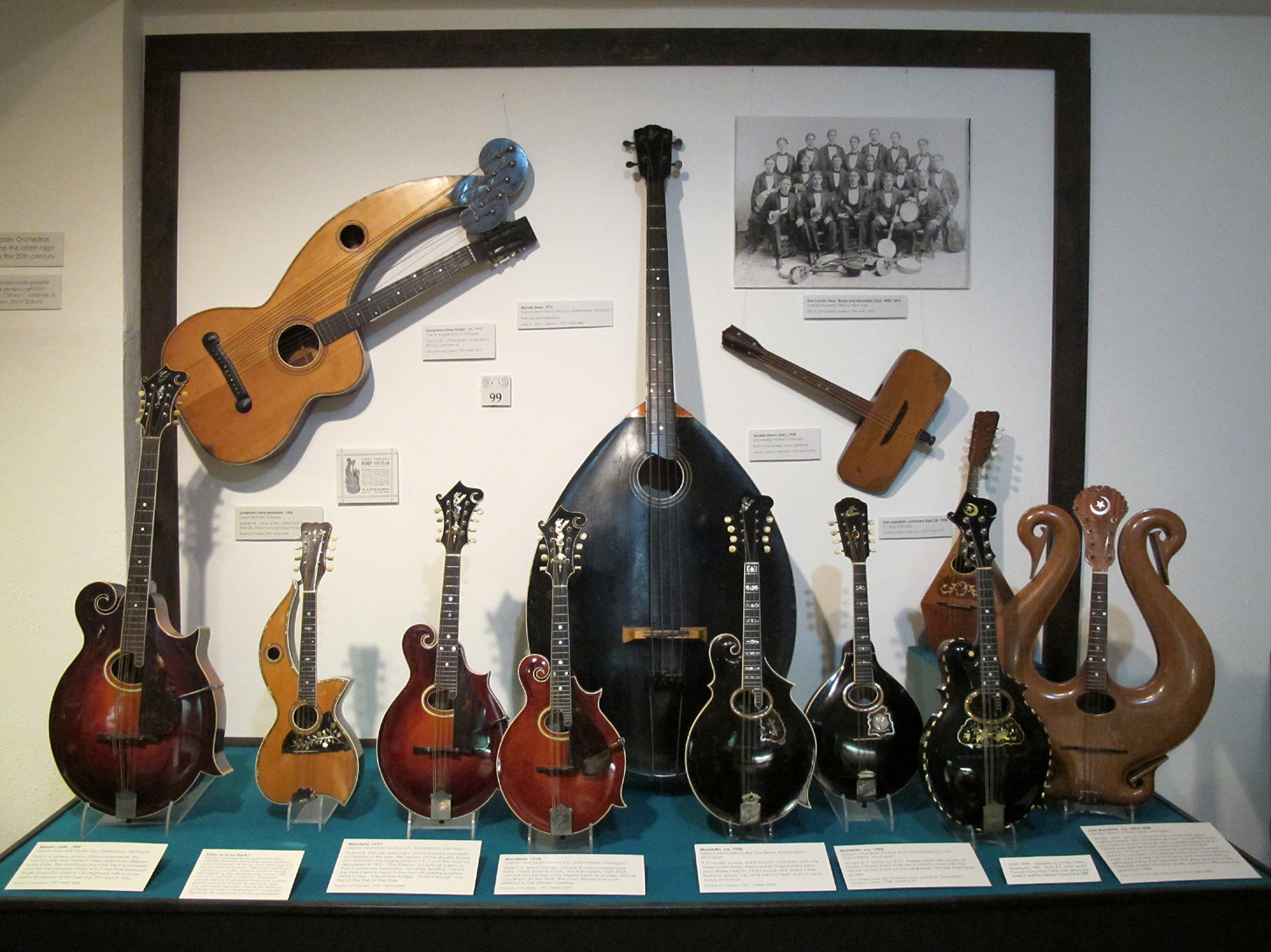 In the last hall upstairs (devoted to American instruments), I finally found the display of my dreams: Gibson and Dyer mandolin orchestra instruments.
In the last hall upstairs (devoted to American instruments), I finally found the display of my dreams: Gibson and Dyer mandolin orchestra instruments.
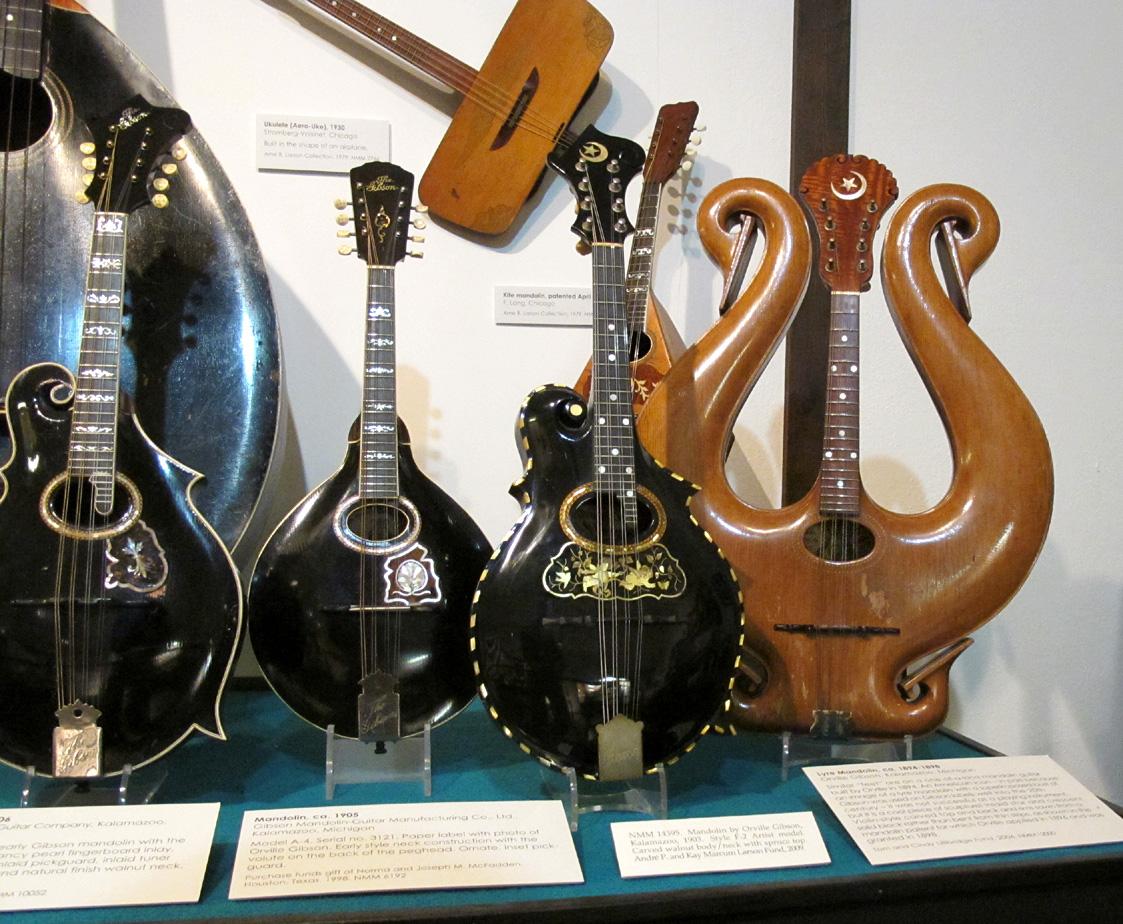 The holy grail is of course the Orville-built lyre mandolin. Just kill me now. In front of it is a fantastic Orville F mandolin with full bling. Two early Gibson Company instruments to the left.
The holy grail is of course the Orville-built lyre mandolin. Just kill me now. In front of it is a fantastic Orville F mandolin with full bling. Two early Gibson Company instruments to the left.
I’ll leave you with these sugarplum visions to fill your dreams….

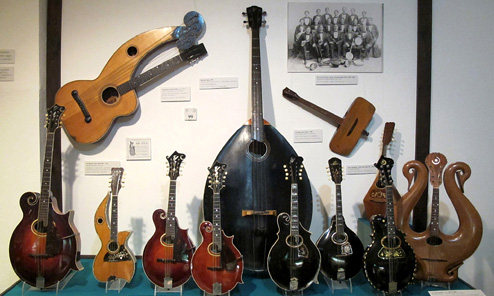
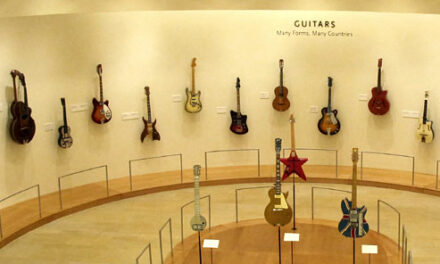
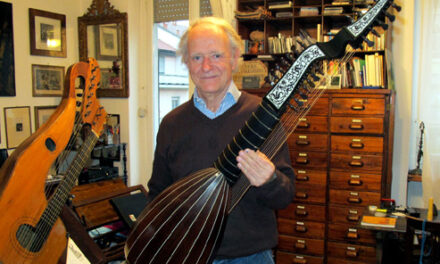
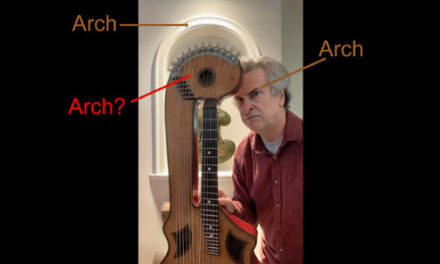
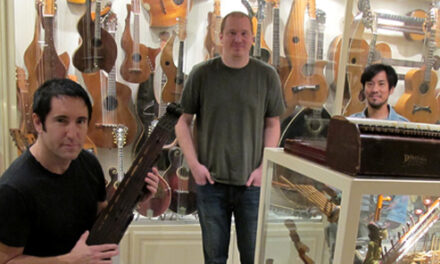
I was a student at the University of South Dakota for one semester in the early 1970s. I was also an acoustic guitar nut. I used to go see Mr. Larson to gawk at his instrument collection, which was then stuffed into a few rooms in one of the university buildings. He had Nationals, wooden Dobros, Gibson harp guitars, Gibson mandolins, etc. The rooms were stuffed with instruments.
As my friend Jack in Boston would say – wicked awesome! Looks like an amazing place! Thanks Sir Gregory!
Wow Gregg,
I’m stunned !!!
What an exquisite display of musical instruments.
You were fortunate that you got to be there.
We are fortunate that you shared your experience
with the rest of the world.
I would Love to go there too. (-:
Thanks you so much.
Bruce Labadie
Another add for the bucket list… I could lose myself there. Thanks Gregg for the info!
-jay
Yes, thanks! How do these priceless treasures come to one place? I hope to visit one day but fear that being among the ghosts of Luthiers past may make me too emotional. Really..
Michael
Wow that was a real treat thanks Gregg